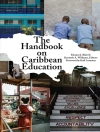‘Rural Living’ offers a comprehensive exploration of life beyond urban boundaries, delving into the intricate tapestry of rural existence. This insightful book examines the economic structures, social dynamics, and environmental challenges unique to rural areas, challenging common stereotypes and presenting a nuanced understanding of rural realities.
It argues that rural communities are not remnants of the past, but dynamic spaces vital to national economies, cultural preservation, and environmental stewardship. The book traces the historical evolution of rural areas from agrarian societies to diverse economic landscapes, highlighting how technological advancements and globalization have reshaped these communities.
It addresses ongoing debates such as the impact of urbanization on rural areas and the balance between conservation and economic growth. Through case studies from various rural settings worldwide, ‘Rural Living’ provides a comparative perspective on rural experiences, linking rural studies with economics, environmental science, and cultural anthropology.
Structured in three parts, the book progresses from introducing core concepts of rurality to exploring major aspects of rural life, and finally examining challenges and potential solutions for rural areas. Its holistic approach and accessible language make it valuable for students, policymakers, and anyone interested in understanding the complexities of rural life and its significance in achieving balanced, sustainable development at local, national, and global levels.












